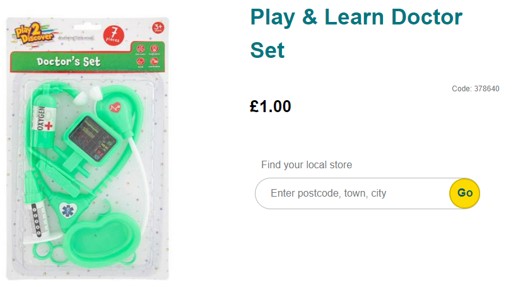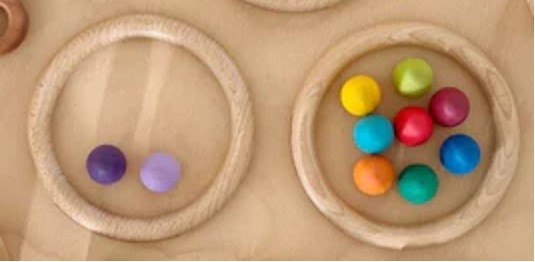DLP'S BIG IDEAS
At Eastwards Consortium, our focus is primarily on educating and developing the next generation of our society. To assist in this, we use our well-known ‘Big Book of Ideas’, a set of activities and tasks focused around pupil development.
Below you will find a set of tabs which depict these tasks further. If you find children are struggling with a task or, on the other hand, passing with flying colours, indications and suggestions are proposed in each section to ensure you keep all children challenged and on-task as much as possible.
To view these sections, simply click on the respective tab and watch it magically appear!
ROLE PLAY
MAIN ACTIVITY
- Get the child to think about characters that the child likes e.g. superheroes etc.
- Ask the child to look for clothes that could be used as that character’s costume.
- Once the child has found the clothes, ask the child to role play as this character.
- To ensure that the child is fully engaged in the role play, create the setting that the child can role play within i.e. if they are role playing as a shopkeeper, have pretend money that they can use.
- To ensure a successful role play session, you can role play as another character with your child.
- When role playing, ask the child to change their voice to mimic how that character would speak.
HOW CAN WE MAKE THIS ACTIVITY MORE CHALLENGING?
- Use a variety of different areas that the child can role play in e.g. the park.
- Visit the local library and read a book to the child. Once you are home, ask the child to re-enact the scenes from the story.
- Use the child’s toys i.e. action figures to role play a story.
HOW CAN WE MAKE THIS ACTIVITY EASIER?
- Ask older siblings or family members to join in if the child is feeling shy or reserved.
- Create a mind map or talk about the characters first with the child to decide on ideas of the different characters the child would like to role play as.
ADDITIONAL IDEAS
- Cheap dressing up costumes can be purchased from charity shops and toys such as play money can be purchased cheaply from shops like Poundland.
- Save empty packets and cartons to create your own shop. Use real or play money and take it in turns to be the shopper & the shop keeper.
- Use a hairbrush as a microphone and role play being a pop start or celebrity.
- This cheap doctor’s set can be purchased from Poundland for £1 – perfect for pretending to be a doctor or a nurse. A good excuse for any tired parent to lay down on the settee and pretend to be the patient!

- https://www.poundland.co.uk/378640-play-learn-doctor-set/
- Bowls, spoons and saucepans from the kitchen can be used to pretend to be a chef. If you have old utensils, take them out to the garden and make mud pies!
UNDERSTANDING THE CONCEPT OF 'MANY' AND 'FEW'
MAIN ACTIVITY
-
-
-
- Go on a hunt around your house with your child and look for the following items: spoons, cups, toys, plates.
- You will need around 6 of each item.
- Once you have found these, place them on a surface – either the floor or a table.
- Ask the child: ‘Give me many _____________ (you would then ask for the items that you would like, for examples ‘Give me many spoons’).’
- Repeat this process a number of times by using the different items and using the terminology ‘many’ and ‘few.’
- Once the child has understood the concept, ask the child to lead the activity.
-
-
HOW CAN WE MAKE THIS ACTIVITY MORE CHALLENGING?
- Play the game ‘Simon Says’ with the child. For example, ‘Simon says give me many forks.’ This will also support the child’s listening skills as they would not be collecting anything if you did not say ‘Simon Says.’
HOW CAN WE MAKE THIS ACTIVITY EASIER?
- If the child does not understand the concept of ‘many’ and ‘few,’ first use the terminology that they might be more familiar with – more, lots, less. Use this terminology first for the main activity and slowly start to ease in the terminology ‘many’ and ‘few’ when the child becomes more confident.
ADDITIONAL ACTIVITIES
-
- This activity can be done anywhere, home, school, out and about. For example:
- At school; Please get me ‘many’ scissors/How many counters have you got?
- At home; Put a few spoons on the table/How many cups do we need?
- Out and about; How many ducks are there?/Pick out a few crisps from the packet.
- Use hoops/pots/create circles out of wool or string and marbles. Put ‘many marbles’ in one & ‘few marbles’ in another. Count the objects and repeat.

Songs & games:
UNDERSTANDING THE CONCEPT OF 'LONG' AND 'SHORT'
MAIN ACTIVITY
-
-
-
- Visit the local park and collect a variety of different sticks that are of different length.
- Put out two sticks next to each other and ask the child: ‘Give me the long stick.’
- The child then gives you the stick and then repeat the activity with the different sticks that you have collected, ensuring that you also use the terminology ‘short.’
- Ask the child: ‘Give me many _____________ (you would then ask for the items that you would like, for examples ‘Give me many spoons’).’
- You can also use toys for this activity.
-
-
HOW CAN WE MAKE THIS ACTIVITY MORE CHALLENGING?
- Remain at the park and ask the child to play in the park’s playground but they have to follow your instructions. For example: ‘Play on the long slide.’
- Collect leaves of different sizes from different trees and ask the child to give you long/short leaves. Then put the leaves in size order: ‘This leaf is short, this leaf is long and this leaf is even longer.’ This will then link to Section 7.7.
HOW CAN WE MAKE THIS ACTIVITY EASIER?
- If the child is finding this concept difficult to understand, start by drawing things that are long first. Once you have drawn long items, ask the child to draw items that are shorter.
- Stretch the word ‘long’ when talking.
LEARNING AND USING THE QUESTION WORD 'WHY'
MAIN ACTIVITY
-
-
-
- Collect some storybooks that could be used to ask ‘why’ questions. For example, ‘Goldilocks and the Three Bears’ could be used to ask:‘Why does Goldilocks go into the house?’‘Why does Goldilocks eat the porridge/sit on the chair/sleep in the bed?’.
- Use ‘why’ as you ask about the pictures, for example:‘Why is Goldilocks eating the porridge?’ ‘Because she is hungry.’‘Why is Goldilocks sleeping?’ ‘Because she is tired.’
- Link the questions to feelings and emotions that the child has experienced.‘Why did the chair break?’ ‘Because Goldilocks sat on it’. ‘How does Goldilocks feel?’
- Prompt your child to answer (‘Why did the chair break?’ ‘Because…’) or give the correct answer if the child is stuck and ask them to repeat it.
-
-
HOW CAN WE MAKE THIS ACTIVITY MORE CHALLENGING?
- Throughout the day ask your child simple ‘why’ questions. For example, ‘Why are you brushing your teeth? Why are you eating your lunch?’
- Choose more complex pictures with more details to ask the ‘why’ questions.
- Don’t prompt or model the answers.
HOW CAN WE MAKE THIS ACTIVITY EASIER?
- Give a hand signal to show ‘why’.
- Write the words ‘why’ and because’ on a piece of paper and point to it as you say it.
- Use soft toys to represent the characters from the story and act it out, asking ‘why’ questions as you go.
USING THE WORD 'FIRST' AND 'LAST' CORRECTLY'
MAIN ACTIVITY
-
-
-
- Collect some toys and put them in a line. Ask the child to point to the ‘first’ and ‘last’ in the line. Repeat with different toys.
- Use toy cars or bricks. Ask the child to ‘Put the red car first’ and ‘Put the blue car last’.
- Ask the children to ‘Move the black car first’ and ‘move the yellow car last’. Repeat with different colours.
-
-
HOW CAN WE MAKE THIS ACTIVITY MORE CHALLENGING?
- Use the words ‘first’ and ‘last’ throughout the day. For example, ‘Hassan was first to sit in the car’, ‘Aisha was the last to finish her dinner’.
- Link ‘first’ and ‘last’ to time activities, for example ‘When we go shopping we will collect the fruit first’ and ‘We will go to Poundland last’.
- Ask your child ‘What did you do ‘first’/’last’? This can be done easily when you read a book together, for example ‘What did Goldilocks do ‘first’?
HOW CAN WE MAKE THIS ACTIVITY EASIER?
- Model the activity and then get your child to copy.
- Use less toys.
- Just focus on the words ‘first’ and ‘not first’ to start with. Introduce ‘last’ after a few days.
SPEAKING IN SENTENCES WITH FOUR WORDS
MAIN ACTIVITY
-
-
-
- Play ‘Simon Says’ and give the child four instructions. You could say ‘Simon says sit under the table’. The child has to listen for four things – ‘Simon Says’, an action, a preposition (e.g. on, under), and a place (e.g. table, chair).
- Ask your child ‘What did you do?’ Child to repeat ‘I sat under the table’. Model the sentence if required.
- Repeat the activity using toys. For example, ‘Put teddy under the bed’.
-
-
HOW CAN WE MAKE THIS ACTIVITY MORE CHALLENGING?
- Use more prepositions – front, behind
- Use more places – bed
- Use more actions – jump, roll
- Ask your child to give the instructions and you carry them out.
HOW CAN WE MAKE THIS ACTIVITY EASIER?
- Model the action/sentence and then get your child to copy.
- Repeat just using the same action and preposition. For example, ‘Simon says sit on the bed/chair/floor’.
- Speak more slowly and repeat your instruction.
USING WORDS TO COMPARE
MAIN ACTIVITY
-
-
-
- Ask your child to collect a soft toy, for example a teddy. Then ask them to collect a ‘bigger’ teddy. Repeat with a ‘smaller’ teddy.
- Point to the first teddy and say ‘This teddy is big’, point to the second teddy ‘This teddy is…’ If the child answers ‘bigger’, praise the child and repeat the sentence. If the child gives an incorrect answer ‘more big’, model the answer and get the child to repeat.
- This can be repeated with different toys regularly while you play with your child.
-
-
HOW CAN WE MAKE THIS ACTIVITY MORE CHALLENGING?
- Use a wider vocabulary – ‘longer’, ‘shorter’, ‘taller’, ‘happier’.
- Compare your child’s actions and appearance to their siblings. For example, ‘Hassan is taller than you’, ‘Aisha’s hair is longer than yours’. Encourage your child to make up some sentences of their own.
- Collect more toys and compare them.
HOW CAN WE MAKE THIS ACTIVITY EASIER?
- Have the words written out on cards and match to the correct toy.
- Just focus on one comparative at a time ‘big’/‘bigger’.
- Ask your child to point before and then model the word. Ask your child to repeat.
UNDERSTANDING OPPOSITES
MAIN ACTIVITY
- Tell the child that you will be going on a materials hunt around your house.
- Ask the child to first look for objects that are hard i.e. metal spoon, remote control etc.
- Then ask the child to look for objects that are soft i.e. pillow, tissue paper etc.
- Talk to the child about difference of both and explain that these things are called ‘opposites.’
HOW CAN WE MAKE THIS ACTIVITY MORE CHALLENGING?
- Introduce different vocabulary (wet/dry, rough/smooth).
HOW CAN WE MAKE THIS ACTIVITY EASIER?
- Start with concepts that are easier to understand (for example, up/down, tall/short) and then build to more difficult concepts.
UNDERSTANDING 'HIS' AND 'HER' PRONOUNS
MAIN ACTIVITY
-
-
-
- Working alongside the rest of your family, find items of clothing for boys and girls/men and women.
- Spread these out on the floor and ask the child to find the following: ‘His hat.’ ‘Her dress.’ Etc.
-
-
HOW CAN WE MAKE THIS ACTIVITY MORE CHALLENGING?
- Use the following sentence starter for the main activity: ‘This is his hat; this is ____ hat.’
- Introduce more difficult pronouns e.g. ‘they/their.’
- When getting ready in the morning, ask the child to get their siblings clothes e.g. Baby Jack is cold. Go and get his coat.’
HOW CAN WE MAKE THIS ACTIVITY EASIER?
- Use the terminology of ‘his/her’ in everyday situations – ‘Well done Sarah. You have put on your coat. Dad is putting on his coat.’
Practise this daily with the child.Online games & activities:
https://www.tinytap.com/activities/g2sv9/play/pronouns-his-her
Youtube films to support:
USING THE SUBORDINATE CONJUNCTION OF 'BECAUSE' TO JOIN SENTENCES
MAIN ACTIVITY
-
-
-
- Place a blindfold over the child’s eyes.
- Have a selection of everyday household items in front of the child. For example: a spoon, pillow, cup, toy cars etc.
- The child needs to touch the items one at a time and then explain what they think it is and why. For example, ‘I think it is a pillow because it is soft.’
- Repeat the activity with the different items.
-
-
HOW CAN WE MAKE THIS ACTIVITY MORE CHALLENGING?
- Read a story book to the child and ask the child to explain how the characters were feeling in the story. For example, ‘The girl was sad because she was lost.’
HOW CAN WE MAKE THIS ACTIVITY EASIER?
- Use the subordinate conjunction of ‘because’ in everyday situations: ‘We are going to the shops because we need to buy food.’
ADDITIONAL ACTIVITIES:
YouTube song to help understand the use of the word ‘because’ – https://www.youtube.com/watch?v=E9WShiGAmIM
BBC Bitesize activity for conjunctions. Ideal for Year 1 & 2 – https://www.bbc.co.uk/bitesize/topics/zkxxsbk/articles/z6rvbdm
Free Twinkl activity (you will need to create a free account) with pictures to generate sentences using ‘because’ – https://www.twinkl.co.uk/resource/t-s-622-why-because-scenes

